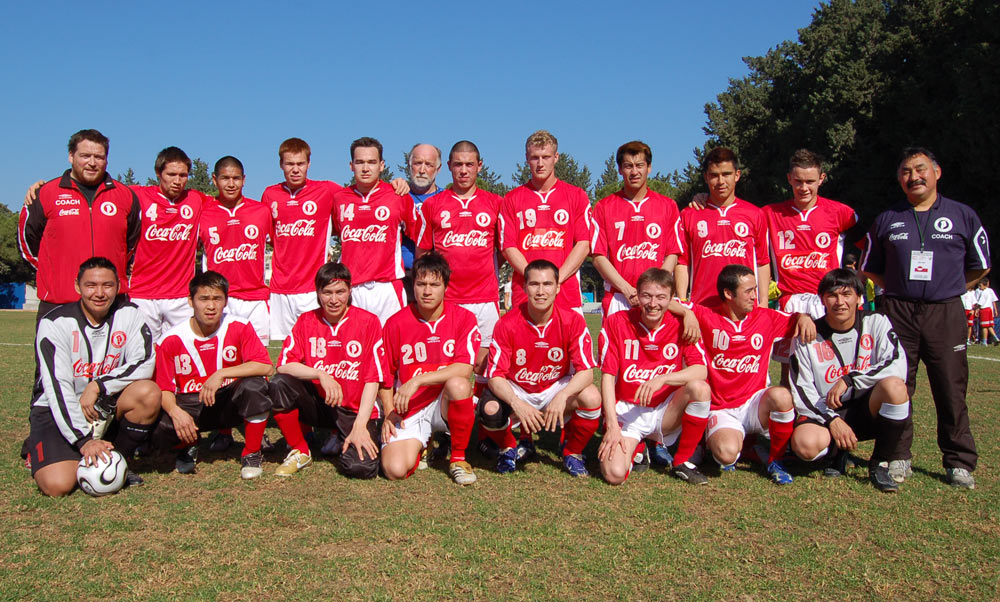This 2018 World Cup has had a number of countries post some surprising results against the traditional soccer-powerhouse countries. That trend, combined with our increasing obsessions with (and availability of) data got me thinking about mining some interesting storylines. (If I get some time, I will build out my soccer models and publish some info in the future). In this process, I began to get interested in storylines such as Iceland having a smaller population (~330,000 people) than the number of registered soccer players in Argentina. That was mind blowing to think about as they fought hard and tied Argentina in the group rounds. Additionally, 4 of the world’s top 5 most populated countries didn’t even qualify for the World Cup in 2018!As I was going down this rabbit hole and researching different countries, I began to get interested in geographical proximities of the qualifiers along with their land mass and population densities. And I came across multiple facts about Greenland that I thought I would share. I found it fascinating that I knew so little about Greenland, so I thought you might find it interesting too!

- Greenland is the 12th largest country by land mass, clocking in at 2,166,086 square kilometers (about 1/3 the size of India; about 30 times bigger than Iceland)
- the Greenland ice sheet covers 1,755,637 square kilometers (81%) (look at that picture above)
- There is a surveyor that claimed there may be 3 islands below the ice sheet!
- Greenland has a population of ~56,000 people (about 1/6 of Iceland)
- Greenland’s population density is 0.0 per square kilometer rounded to the nearest tenth (that just looks funny doesn’t it?)
- Greenland is part of the Kingdom of Denmark; I had no idea. Kingdom of Denmark = 1) Denmark, 2) Faroe Islands, 3) Greenland)
- Greenland is officially/geographically part of North America, though it is politically associated with Europe
- Greenland is the world’s largest island (Australia and Antarctica are considered continents, not islands)
- Greenland’s official language is Greenlandic (I had never heard of it!), which has 3 different dialects…and each of those dialects are completely different from one another
- Greenland is mostly populated by Greenlandic Inuit (88%) and Greenlandic Danes (12%)
-
- the Kalaallit of west Greenland, who speak Kalaallisut
-
- the Tunumiit of Tunu (east Greenland), who speak Tunumiit oraasiat (“East Greenlandic”)
-
- the Inughuit of north Greenland, who speak Inuktun (“Polar Eskimo”)
- Greenland is called Kalaallit Nunaat in Greenlandic and Grønland in Danish
- Norwegian-born Icelander Erik the Red was said to be exiled from Iceland for manslaughter. After finding a habitable area northwest of Iceland and settling there, he named it Grœnland (translated as “Greenland”), supposedly in the hope that the pleasant name would attract settlers
- Greenlanders are actual Citizens of Denmark
- Greenland is not like the Faroe Islands (although it is also part of the Kingdom of Denmark) national football team; Greenland is not a member of FIFA nor of any continental confederation and therefore is not eligible to enter the World Cup or other sanctioned tournaments. Greenland is considered part of Denmark for the purposes of international football
- Most of the matches Greenland has played have been against the Faroe Islands and Iceland, but neither of the two consider those games full internationals
- Greenland participated in the 2006 FIFI Wild Cup (had no idea such a tournament existed…what an interesting name). The team played two games and lost both, the first 0–1 against the Turkish Republic of Northern Cyprus and the second 2–4 against Zanzibar. They were eliminated in the First Round.
- Greenland was eliminated in Round 1 of the ELF Cup. They played three matches in total, beating the national team of Gagauzia 2–0, drawing 1–1 with Zanzibar and losing 1–0 to Kyrgyzstan.
- In December 2014 the DBU and Greenland’s GBU formed a partnership with the aim of having Greenland included as a UEFA and FIFA member by 2020.
- The climate does not support grass, but games are played on turf in Greenland’s capital, Nuuk, at Nuuk Stadium (current capacity of 2,000). The Arktisk Stadion (Arctic Stadium) is a proposed association football stadium which would replace Nuuk Stadium as the national stadium of Greenland. The stadium is proposed, in part, to allow Greenland to participate in FIFA and UEFA as the organizations’ strict guidelines on stadiums are a barrier to admittance. It is expected to seat several thousand spectators and be fully enclosed with heating. The DBU’s support of a Greenlandic application to FIFA included financial support which would be used to replace the clay courts of at least one field in each of the country’s four municipalities, with artificial turf.
Considering the population and GDP (~$2B) — less than half the GDP of my small town of Morgantown, WV — Greenland seems to be reaching for the stars when it comes to soccer with some help from Denmark. And after seeing Iceland’s fantastic showing this year, who can blame them! Anything is possible in sports!
